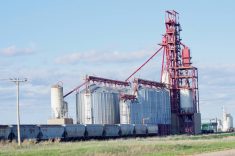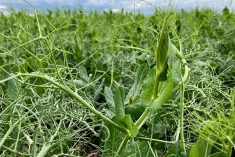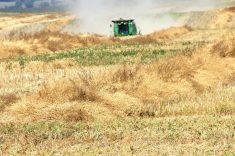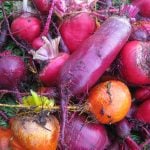While fields in central and southern Saskatchewan and southwestern Manitoba got some timely rain last week, farmers across both provinces are generally waiting for warmer temperatures to improve crop development.
Saskatchewan Agriculture on Monday reported rainfall ranging from just seven millimetres in the province’s northwest to 75 mm in its dry southwest. Over 60 per cent of fall cereal crops, spring cereals, pulses and flax crops are now reported to be in good to excellent condition, provincially. Just under half of the province’s canola crops are in good to excellent shape.
Read Also

Pulse Weekly: India imposes 30 per cent tariff on yellow peas
Pulse Canada is quite unhappy with the Indian government’s recent move to slap a 30 per cent tariff on its yellow pea imports, said the pulse organization’s board chair Terry Youzwa.
In most cases, the ministry reported, less than half the crops are reported to be at or ahead of normal development for this time of year and warmer temperatures are needed, both for crop development and to help move haying operations along. The ministry reported flooding as the main source of crop damage last week.
Manitoba Agriculture, Food and Rural Initiatives reported some areas of the province’s dry southwest receiving over 100 mm of rain last week, with rainfall elsewhere ranging from just 10 mm in the northwest to as much as 70 mm in central areas around Gladstone and points further east.
Most areas of Manitoba report needing warm conditions both to advance crops and to allow for weed control operations. Standing water and ponding posed problems on some fields in the province’s central crop growing region and in the Interlake region between Lake Winnipeg and Lake Manitoba.
Excess moisture is stressing a variety of crops in the central region, where a number of areas reported farmers are draining water from fields using quads and tractors. Several farmers in the region were still working to clear ditches and drains of blown-in topsoil and straw due to high winds earlier in the spring.
Low-lying areas of the northern Interlake are also seeing heavy crop stress due to excess moisture, with some dead plants expected.














